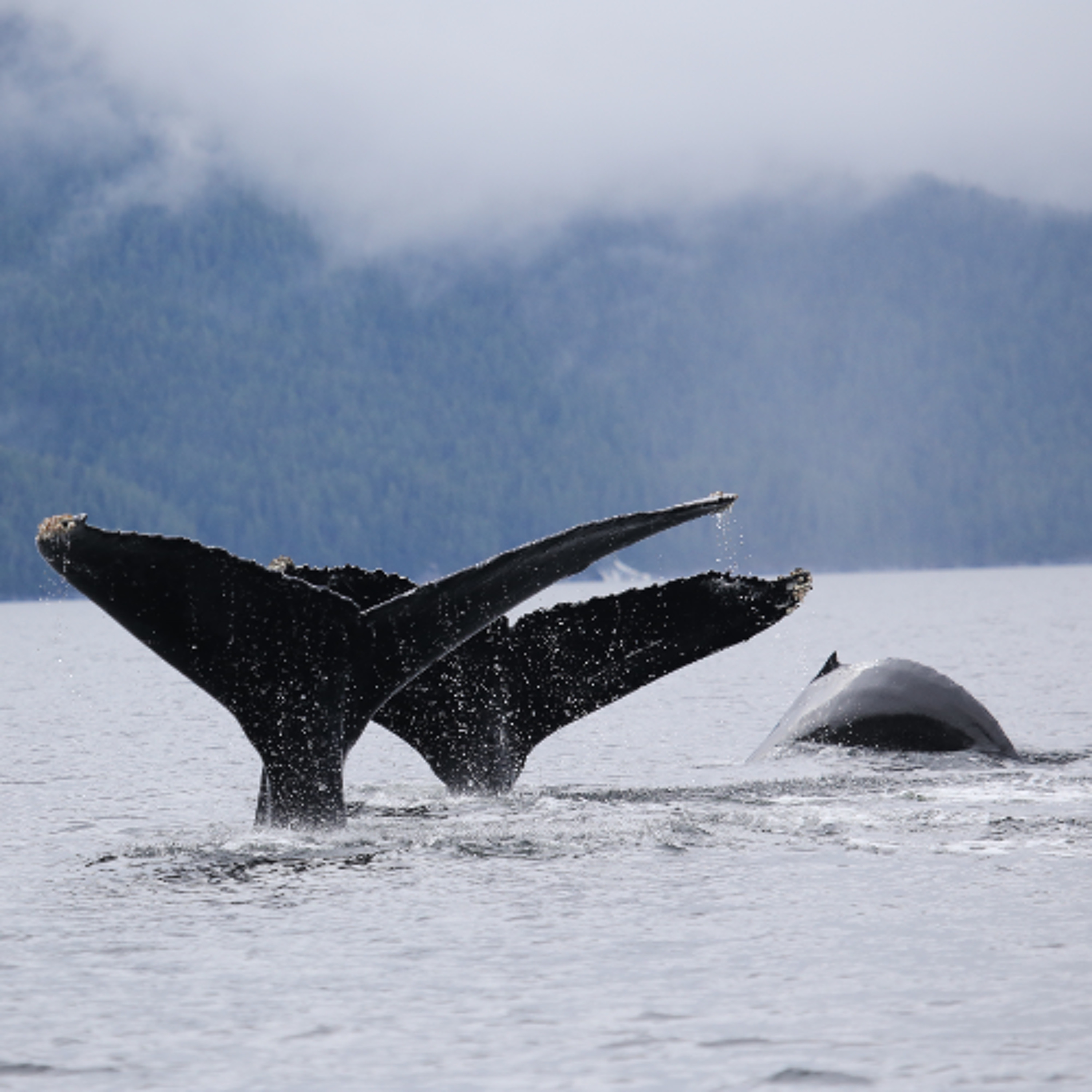Janie Wray_ Listening to the whales
- Author
- roy.hales9.gmail.com
- Published
- Sun 08 Dec 2024
- Episode Link
- https://soundcloud.com/the-ecoreport/janie-wray-listening-to-the
Roy L Hales/Cortes Currents - Over 100 people came to the Quadra Community Centre on December 7, to learn about the acoustic dialects and social connections of Orca, Humpback and Fin Whales. Sierra Quadra invited Janie Wray - CEO and co-founder of the North Coast Cetacean Society, BC Whales, and the manager of the BC Hydrophone Network - to share from her more than two decades of research.
“One thing that we've recognized is that if we want to understand and protect whales, we have to listen them. That is why we think hydrophones are so important. It's a non-invasive way of trying to understand whale communication and how communication between whales has changed over the years. There's so many different whale species along this coast that are communicating,” she said.
“The more we learn, the better our chances are to protect whales and the only way we can protect whales is to work in collaboration with other people along this entire coast of BC, especially with Indigenous communities.”
Cortes Currents: How did you come to study whales?
Janie Wray: “I was about nine years old. I had heard the recording of Humpback whales singing. It was the first time that I had an emotional response to a sound, especially the sound of another species. That pretty much put me on track. I was fascinated by whales and whale communication.”
“After school, I traveled a bit and then went to university. From there, I worked as an intern at a place called OrcaLab, which is near the top end of Vancouver Island. They have a large number of hydrophones in the water. A hydrophone is like an underwater microphone, it allows you to listen to the underwater marine soundscape. It was listening to a lot of different whales, especially Orca in those days. The more I learned about whale communication, the more I wanted to know.”
“I met my partner at that point and we ended up purchasing a small liveaboard research vessel. We traveled up the whole coast of BC and ended up in the First Nations community of Hartley Bay. We asked the Hereditary Chief at that time for permission to build a whale research station within their territory. Not only did they give us permission, they shared with us their own historical knowledge of whales and also pointed us in the right direction concerning a great place to build a facility. So we built that in 2001. I've pretty much been working up there ever since.”
“We record and analyze every whale call that we hear, whether that be an Orca, a Fin Whale or a Humpback whale.”
“In regards to Humpback whales, we have a heavy focus on this song display, which is a song that evolves and changes year to year. It's only the males that sing this song, but when you listen to it, it really is a song. We're trying to understand how that song is being learned between individuals within the community of whales along the coast of BC, but also how it changes from the North coast to the South coast. Then as they migrate towards Mexico and Hawaii, how is the song changing and evolving through time and from season to season?”
“The other call type we're fascinated with is this bubble net feeding call. It's a call that they only use when they're bubble net feeding. So we can actually put a behaviour to a call type, which is unusual to do with whales. When we hear that call, we know they're bubble net feeding, but even that particular call type has changed and evolved over the last 20 years. What these whales have actually done is they've taken a call type that was a bit complicated and they simplified it.”
“There's a large number of Humpback whale social calls that are quite consistent. All of the Humpbacks within the Pacific Ocean use somewhat similar social calls. Up and down the whole coast, from Mexico, to Hawaii, we're having lots of fun trying to catalog those.”
